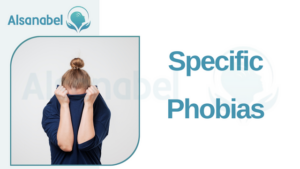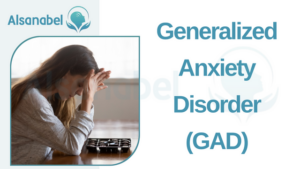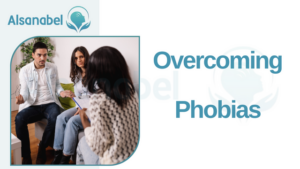Phobias Causes, Symptoms, and Treatments 2023
- Category ADHD
Table of Contents
ToggleDefinition and Explanation of Phobias
Phobias are a type of anxiety disorder that cause individuals to experience extreme and irrational fear. These fears are triggered by specific situations, living creatures, or places. A phobia can be a debilitating condition, as the fear felt by those with phobias is often disproportionate to the actual danger posed by the trigger. In this blog, we will explore the definition and explanation of phobias, as well as the different types that exist.
Types of Phobias
There are three types of phobias recognized by the American Psychiatric Association (APA). These include:
- Specific Phobia: This is an intense irrational fear of a specific trigger. Some common examples include fear of heights, spiders, or flying. Individuals with specific phobias may go to great lengths to avoid coming into contact with the object or situation that triggers their fear.
- Social Phobia or Social Anxiety Disorder: This type of phobia involves a fear of social situations and being negatively judged or evaluated by others. It can lead to extreme self-consciousness and avoidance of social interactions.
- Agoraphobia: Agoraphobia is a fear of being in situations or places where escape might be difficult or embarrassing. It often leads individuals to avoid crowded places or places where they have previously experienced panic attacks.
These are just some examples of the types of phobias that exist. It is important to note that phobias can vary greatly from person to person, and each individual may have their own unique triggers that cause them extreme fear. Understanding and seeking treatment for phobias is essential in order to manage and overcome the overwhelming fear and anxiety that they cause.
Specific Phobias
Specific phobias are persistent, intense, and irrational fears of specific objects or situations. These fears go beyond the normal level of concern and can cause significant distress. Common types of specific phobias include a fear of flying, driving, enclosed spaces, or going to school. People with specific phobias may go to great lengths to avoid the feared object or situation, which can greatly impact their daily lives and well-being.

Causes and Risk Factors
The exact cause of specific phobias is not fully understood. However, it is believed that a combination of genetic, environmental, and psychological factors may contribute to the development of specific phobias. Often, a traumatic event or a negative experience related to the feared object or situation can trigger the phobia. Additionally, individuals with a family history of anxiety disorders or those who have experienced high levels of stress or trauma may be at a higher risk of developing specific phobias.
It is important to note that specific phobias are different from general anxiety disorders. While anxiety disorders involve excessive and persistent worry and fear in various situations, specific phobias are specific to a particular object or situation. People with specific phobias may experience symptoms such as rapid heartbeat, shortness of breath, trembling, and a strong desire to escape the feared situation.
If you or someone you know is struggling with a specific phobia, seeking professional help from a mental health provider can be beneficial. Various treatment options, such as cognitive-behavioral therapy and exposure therapy, can help individuals gradually confront and overcome their fears, leading to improved quality of life.
Social Phobia (Social Anxiety Disorder)
Social phobia, also known as social anxiety disorder, is a mental health condition characterized by an intense fear of social situations. Individuals with social phobia experience excessive anxiety and self-consciousness in everyday interactions, fearing being scrutinized or judged negatively by others. Symptoms can include rapid heartbeat, sweating, trembling, difficulty speaking, and a strong desire to avoid social situations.
People with social phobia often worry excessively about embarrassing themselves or being humiliated in social settings. They may fear being the center of attention or fear interacting with authority figures. These fears can be so intense that individuals with social phobia may go to great lengths to avoid social situations altogether.
Impact on daily life and relationships
Social phobia can significantly impact a person’s daily life and relationships. Individuals with social anxiety disorder may find it challenging to form and maintain relationships, both personal and professional. They may struggle with attending social events, participating in meetings or group activities, and may even have difficulty going to work or school.
The fear and anxiety associated with social phobia can lead to isolation, feelings of loneliness, and low self-esteem. It may also interfere with one’s ability to pursue career opportunities or reach their full potential. The constant worry and avoidance can be exhausting and take a toll on a person’s overall well-being.
Fortunately, there are effective treatments available for social phobia, such as cognitive-behavioral therapy and medication. With the right support and treatment, individuals with social phobia can learn to manage the anxiety and lead fulfilling lives. It is essential to seek help from a mental health professional if you suspect you or someone you know may be experiencing symptoms of social phobia.
Agoraphobia
Agoraphobia is an anxiety disorder in which individuals experience an intense fear and avoidance of public places or situations where they might feel trapped or panicked. People with agoraphobia often worry about being unable to escape or get help if they were to have a panic attack or experience anxiety symptoms.
The fear associated with agoraphobia can be so overwhelming that individuals may feel unable to leave their homes or enter crowded areas. This can lead to a significant disruption in their everyday lives and can cause feelings of isolation and restriction. Some common symptoms of agoraphobia include excessive worry, rapid heartbeat, sweating, trembling, shortness of breath, and a strong desire to avoid feared situations.
Causes and Treatment Options
The exact cause of agoraphobia is not fully understood. It is believed to result from a combination of genetic, environmental, and psychological factors. A history of panic disorder or experiencing traumatic events may increase the risk of developing agoraphobia.
Treatment for agoraphobia typically involves a combination of therapy and medication. Cognitive-behavioral therapy (CBT) is often used to help individuals gradually confront and overcome their fears through exposure therapy and the development of coping mechanisms. Medications such as antidepressants or anti-anxiety drugs may also be prescribed to help manage symptoms.
It is important for individuals with agoraphobia to seek professional help and support to address their fears and improve their quality of life. With proper treatment, individuals can learn to manage their anxiety and regain their ability to engage in activities outside their homes, leading to a more enjoyable.
Generalized Anxiety Disorder (GAD)
Generalized Anxiety Disorder (GAD) differs from phobias in terms of its scope and focus. Phobias are specific fears related to particular objects or situations, such as a fear of heights or spiders. Individuals with phobias may experience extreme distress when confronted with their specific fear but may not necessarily experience persistent fear in their daily lives.

On the other hand, Generalized Anxiety Disorder is characterized by excessive worry and anxiety over a wide range of day-to-day situations. People with GAD may find themselves worrying excessively about various aspects of their lives, such as work, relationships, health, and overall well-being.
It is possible for individuals to have both phobias and Generalized Anxiety Disorder. In these cases, the anxiety experienced from GAD may intensify the fears associated with the phobia. For example, someone with a phobia of public speaking may not only feel fearful when faced with a speech but also experience ongoing worry and anxiety leading up to the event.
Symptoms and treatment options
The symptoms of Generalized Anxiety Disorder can vary from person to person but commonly include restlessness, irritability, difficulty concentrating, muscle tension, and sleep disturbances. Individuals with GAD often find it challenging to control their worrying and may experience physical symptoms such as headaches, stomachaches, and fatigue.
Treatment for Generalized Anxiety Disorder typically involves a combination of therapies, including cognitive-behavioral therapy (CBT) and medication. CBT helps individuals identify and challenge their anxious thoughts and develop coping strategies. Medications such as selective serotonin reuptake inhibitors (SSRIs) or benzodiazepines may also be prescribed to manage the symptoms of GAD.
It is important for individuals experiencing symptoms of GAD to seek professional help early. Early intervention can lead to better management of symptoms and a higher chance of improvement. If you or someone you know is struggling with excessive worry and anxiety, reach out to a mental health professional.
Panic Disorder
Panic disorder is a type of anxiety disorder characterized by recurring and unexpected panic attacks. These panic attacks are episodes of intense fear or terror that occur suddenly and typically last for a short period of time. During a panic attack, individuals may experience a range of physical sensations, including a racing heart, shortness of breath, chest pain, dizziness, shaking, sweating, or nausea.
The symptoms of panic disorder can be debilitating and often lead to significant distress and interference with daily life. People with panic disorder may constantly worry about when the next panic attack will happen, which can lead to fear or avoidance of places or situations where previous panic attacks have occurred.
Connection to Phobias and Treatment Approaches
Phobias and panic disorders are closely related. Phobias are irrational and overwhelming fears of specific objects, situations, or activities. They can significantly impact an individual’s life by causing them to avoid certain places, activities, or even relationships. For example, someone who experiences a phobia around flying may not even go to an airport.
Treatment for panic disorder and phobias often involves a combination of therapeutic approaches. Cognitive-behavioral therapy (CBT) is a common and effective treatment method that aims to help individuals identify and challenge their irrational thoughts and beliefs, as well as learn healthy coping mechanisms to manage anxiety and panic attacks.
Other treatment options may include medication, such as selective serotonin reuptake inhibitors (SSRIs), which can help alleviate the symptoms of panic disorder.
It is important to note that seeking help is crucial for individuals with panic disorder or phobias, as these conditions can negatively impact relationships, school work or career opportunities, and daily activities. With proper support and treatment, individuals can effectively manage and overcome their panic disorder or phobias and lead fulfilling lives.
Treatment Options
Exposure treatments rooted in behavioral approaches are frequently used as a first-line treatment for different types of phobias. Behavioral therapy can also take place in groups or with family members. However, this is not the sole effective treatment for phobias. If you are experiencing a phobia interfering with your daily life, you should talk to your doctor to determine what approach will best address your needs.
If you do seek treatment, the exact methods the therapist uses to help you may vary but will likely include some form of behavioral therapy. Keep reading to learn about the common types of therapy used to treat phobias.
Cognitive-Behavioral Therapy for Phobias
A person who has a phobia believes situations with the feared object are inherently dangerous. This belief leads to occur as soon as the feared situation is encountered. Cognitive-behavioral therapy (CBT) aims to help individuals identify and challenge these irrational beliefs and replace them with more realistic thoughts. By doing so, they can gradually reduce their fear and anxiety.
During CBT sessions, the therapist may use various techniques such as exposure therapy, where the person is slowly exposed to the feared object or situation in a controlled and supportive environment. They will also work on developing coping strategies and relaxation techniques to manage any anxiety symptoms that may arise.
Medication Options for Phobia-Related Anxiety
In some cases, medication may be prescribed to help manage phobia-related anxiety. Anti-anxiety medications, such as benzodiazepines, can help alleviate symptoms of anxiety and panic attacks. However, these medications are typically prescribed for short-term use due to their potential for dependence and side effects.
Other medications, such as selective serotonin reuptake inhibitors (SSRIs), are commonly used to treat anxiety disorders. These medications can help regulate serotonin levels in the brain and reduce symptoms of anxiety. However, it’s important to consult with a healthcare professional to determine the most suitable medication and dosage for your specific situation.
It’s important to note that medication alone is not considered a long-term solution for treating phobias. It is often used in conjunction with therapy to address the underlying causes of the phobia and teach individuals effective coping mechanisms.
Overcoming Phobias
Phobias can have a significant impact on an individual’s life, causing heightened anxiety and fear in specific situations or objects. It is essential to address these phobias as soon as symptoms appear to prevent them from taking control of your life.

Exposure therapy for phobias
One effective method for overcoming phobias is exposure therapy. This therapy focuses on changing your response to the object or situation that you fear. By gradually and repeatedly exposing yourself to the source of your specific phobia, along with the related thoughts, feelings, and sensations, you can learn to manage your anxiety. Over time, this approach can help you develop a new and healthier response to the once-feared object or situation.
Self-help strategies and support
In addition to exposure therapy, self-help strategies and support can also be beneficial in overcoming phobias. Our mental health self-help guides, based on Cognitive Behavioural Therapy (CBT), have proven highly successful in helping people with phobias and other mental health issues. These guides provide practical steps and techniques that individuals can use to address their phobias at their own pace.
Additionally, attending self-help groups or seeking professional support can provide a supportive environment where individuals can share their experiences and learn from others who have successfully overcome phobias. It is essential to recognize that everyone’s journey is unique, and finding the right approach that works for you is crucial in overcoming your phobia.
By combining exposure therapy, self-help strategies, and support from professionals or peers, you can take significant steps towards overcoming your phobia and regaining control of your life. Remember, it is never too late to seek help and start the journey towards a phobia-free future.
Living a fulfilling life
Living a fulfilling life despite phobias is possible with the right support and treatment. It is important to recognize that phobias are a common mental disorder that affects many individuals worldwide. The prevalence, incidence, course, and comorbidities of specific phobias are similar across different subtypes, suggesting that effective treatment can potentially reduce the incidence of other mental disorders.
Specific phobias often begin early in life and can persist for years or even decades. They are characterized by intense fear and avoidance of specific objects or situations. Despite the distress and impairment caused by these phobias, some individuals may find comfort in avoiding the feared stimuli. However, it is essential to understand that avoiding the phobia triggers may only provide temporary relief and can limit one’s experiences and opportunities.
Living a fulfilling life despite phobias involves seeking professional help and undergoing evidence-based treatments, such as cognitive-behavioral therapy (CBT). CBT helps individuals challenge and modify their thoughts and behaviors associated with the phobia, ultimately reducing fear and avoidance. Additionally, exposure therapy, a specific form of CBT, allows individuals to gradually face and confront their fear in a controlled and supportive environment.
Building a support network of understanding and empathetic individuals can also greatly contribute to living a fulfilling life with phobias. Family, friends, or support groups can provide emotional support and encouragement throughout the journey of managing and overcoming phobias. Open communication and education about phobias can help loved ones better understand and support those dealing with this disorder.
It is important to remember that living with phobias does not define a person’s worth or capabilities. With the right treatment, support, and determination, individuals with phobias can lead fulfilling lives, pursuing their goals, and engaging in activities that bring them joy and fulfillment. Don’t let phobias hold you back from living the life you desire – seek help, surround yourself with support, and believe in your ability to overcome.









